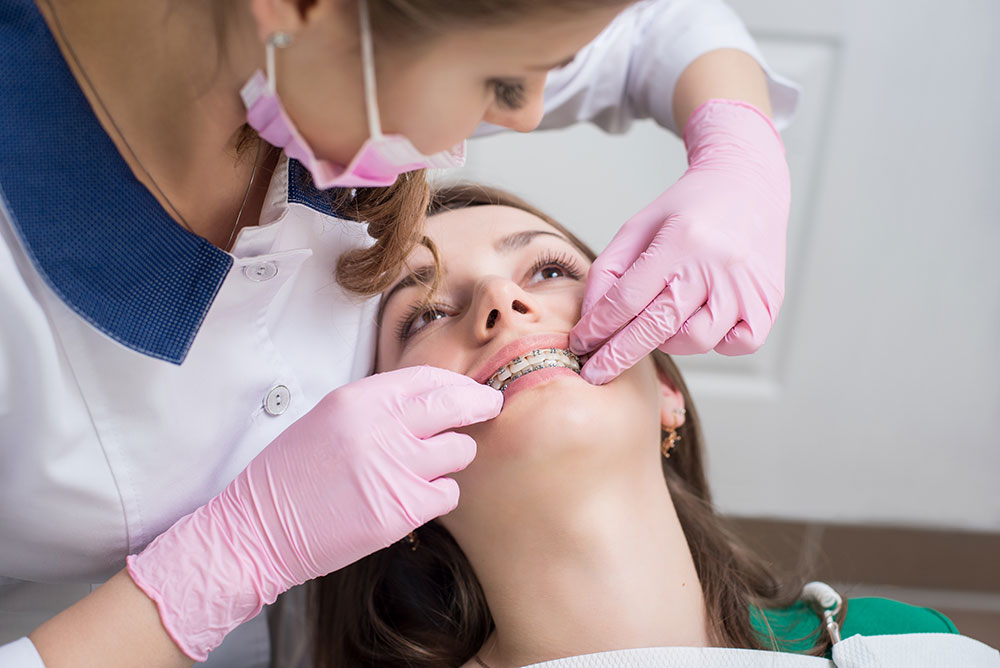Fascination About Legacy Orthodontics
Fascination About Legacy Orthodontics
Blog Article
The Facts About Legacy Orthodontics Revealed
Table of ContentsGetting My Legacy Orthodontics To WorkThe smart Trick of Legacy Orthodontics That Nobody is DiscussingAbout Legacy OrthodonticsGetting The Legacy Orthodontics To WorkIndicators on Legacy Orthodontics You Should Know
In enhancement, we provide flexible therapy timetables, flexible settlement choices and an enjoyable, pleasurable experience.An orthodontist is a dental professional educated to identify, protect against, and treat teeth and jaw irregularities. They correct existing conditions and are trained to determine issues that may develop in the future. Orthodontists function with individuals of all ages, from children to adults. People commonly associate an ideal smile with healthiness.
Malocclusion, or misaligned teeth, can bring about dental problems, consisting of dental cavity, periodontal illness, and tough or painful eating. Not every person is birthed with straight teeth. If you have a poor bite or big spaces between your teeth, you may want to speak with a dentist focusing on orthodontic care.
Little Known Facts About Legacy Orthodontics.
( Photo Credit: DigitalVision/Getty Images) Orthodontists use repaired and removable dental devices, like dental braces, retainers, and bands, to transform the setting of teeth in your mouth. Orthodontic treatment is for oral problems, including: Uneven teethBite issues, like an overbite or an underbiteCrowded teeth or teeth that are too far apartJaw misalignmentThe goal of orthodontic therapy is to improve your bite.
While you could think of orthodontists as primarily for kids or teenagers that require dental braces, they can deal with oral issues at any age. Orthodontists participate in university, dental institution, and orthodontic school.
, however not all dental practitioners are orthodontists. They focus on two locations: Exactly how to appropriately and securely move teeth How to properly assist development in the teeth, jaw, and faceOnce an orthodontist has finished training, they have the choice to end up being board licensed.
All about Legacy Orthodontics
Misalignment, or malocclusion, is the most common reason individuals see an orthodontist. It is genetic and is the outcome of dimension distinctions between the upper and reduced jaw or in between the jaw and teeth. Malocclusion leads to tooth overcrowding, a misshapen jaw, or irregular bite patterns. Malocclusion is normally treated with: Your orthodontist connects steel, ceramic, or plastic square bonds to your teeth.
If you have just small malocclusion, you might be able to make use of clear dental braces, called aligners, rather than typical dental braces (https://urlscan.io/result/7d65dac9-0341-459e-8786-85beeca47567/). Some individuals need a headwear to aid move teeth into line with stress from outside the mouth. After braces or aligners, you'll need to use a retainer. A retainer is a custom gadget that keeps your teeth in position.
They can produce additional area in the mouth without having to draw teeth. Orthodontists use cords, surgical screws, or plates to support your jaw bone.
You may require to see an orthodontist if you have: Crowding or not adequate area for all of your teethOverbite, when your top teeth come over your base teethUnderbite, when your anonymous base teeth are too far forwardSpacing or concerns with gapsCrossbite, which is when your top teeth fit behind your bottom teeth when your mouth is closedOpen bite or an upright void between your front base and upper teethMisplaced midline, when the center of your bottom and top teeth do not line up Remedying an oral malocclusion can: Make biting, eating, and speaking easierImprove the proportion of our face and your total appearanceEase pain from temporomandibular joint problemsSeparate your teeth and make them less complicated to clean up, assisting stop dental caries or cavities It's typically a dental professional that initially notifications misaligned teeth throughout a routine exam.
Little Known Questions About Legacy Orthodontics.

Throughout your very first orthodontic examination, you'll likely have: A dental examPhotos taken of your face and smileDental X-raysPanoramic (360 level) X-rays of your face and headImpressions to develop molds of your teethThese examinations will help your orthodontist know just how to continue with your therapy. clear braces. An orthodontist is a dental professional who's had training to treat your teeth and jaw
Orthodontists might perform surgical treatment, exams,X-rays,and more to assist you acquire an extra comfortable, much healthier smile. An orthodontist is concentrated on your bite, so something like a damaged tooth would certainly be taken care of by a dental practitioner. Orthodontists are dental experts however not all dental practitioners are orthodontists. Orthodontists are concentrated on your bite, or the method your teeth meshed, and the straightness of your teeth.
Ever before wondered how celebs constantly seem to have completely lined up teeth? The answer typically depends on the competent hands of an orthodontist. What precisely does an orthodontist do? Orthodontists are oral professionals that concentrate on remedying abnormalities in the teeth and jaws. Their proficiency exceeds just producing a lovely smile; it includes boosting your overall oral health and wellness and feature.
What Does Legacy Orthodontics Do?

While braces are the most frequently identified orthodontic treatment, orthodontists have a varied toolkit at their disposal. The details approach chosen depends on the extent of the situation, the patient's age, and specific preferences. These tried-and-true dental braces make use of a system of braces bound to the teeth and linked by wires.
Clear aligners, like Invisalign, are a preferred alternative for clients seeking a much more discreet treatment option. These detachable trays are personalized to progressively move the teeth's position. Headwear might be used in conjunction with dental braces or aligners to use added targeted forces, specifically for correcting jaw disparities. In situations of narrow jaws, palatal expanders can be used to create space for appropriate tooth positioning.
Report this page